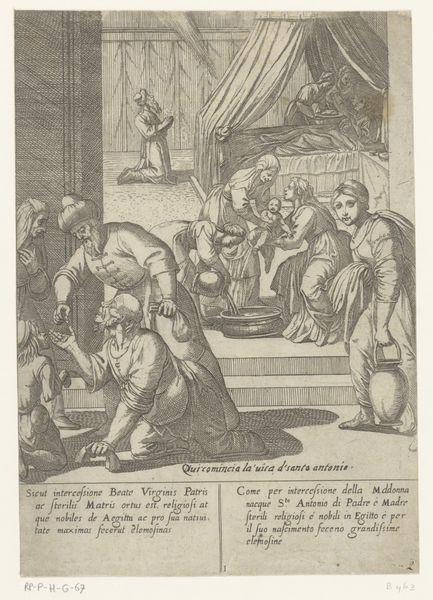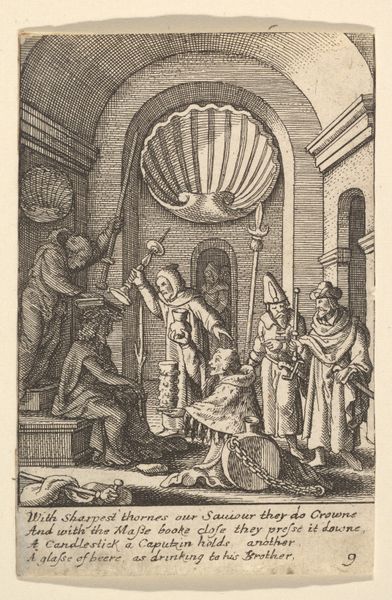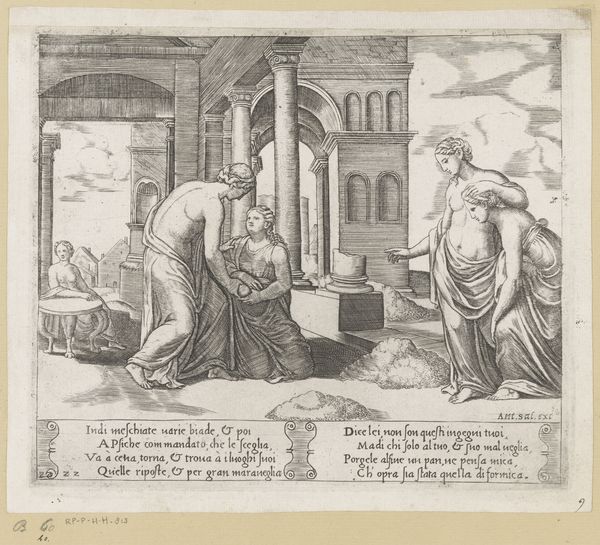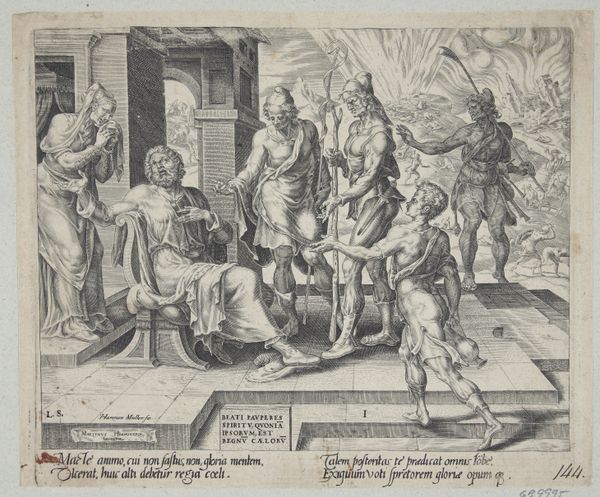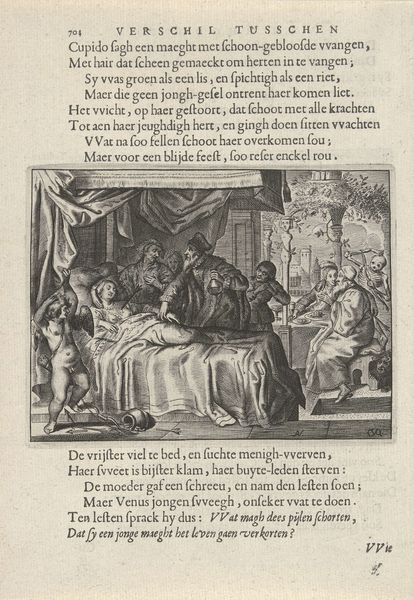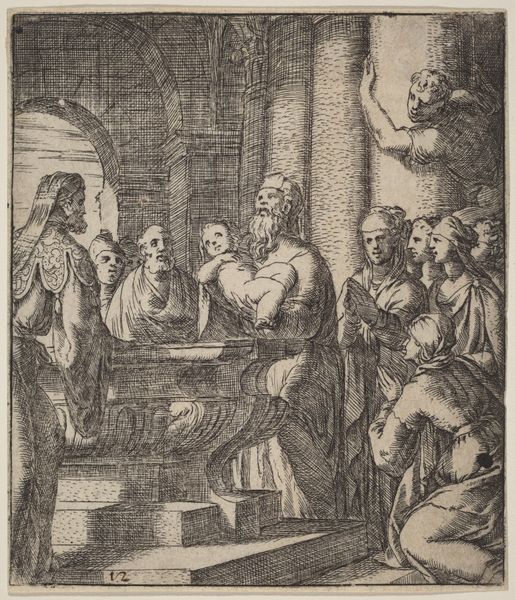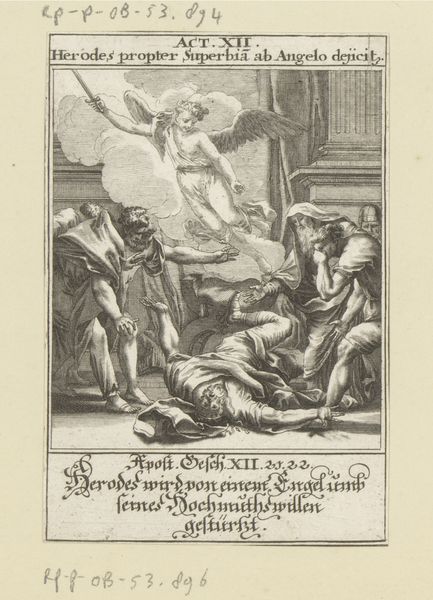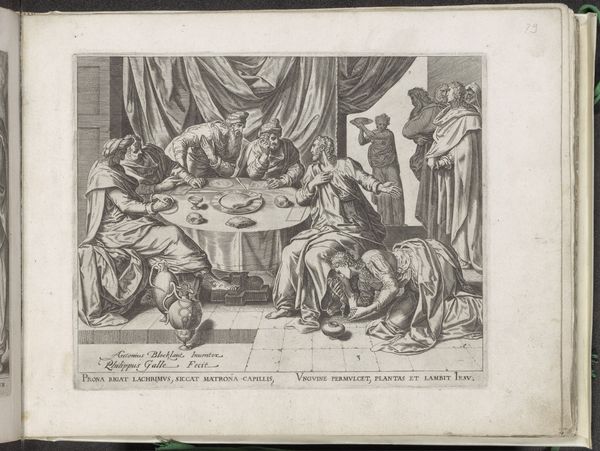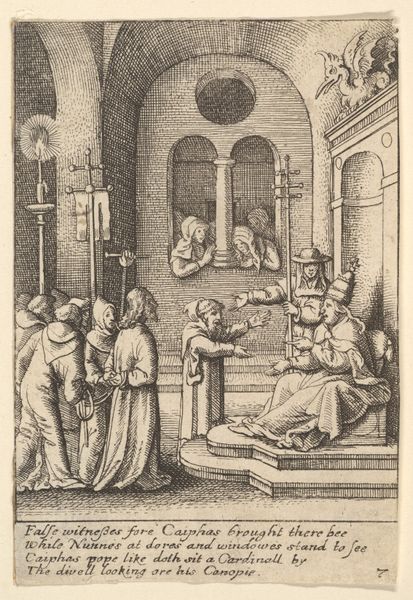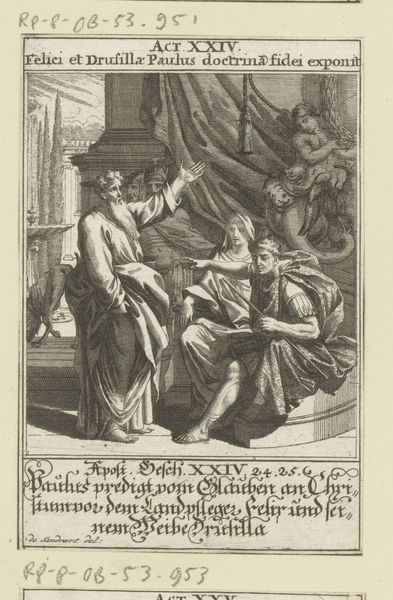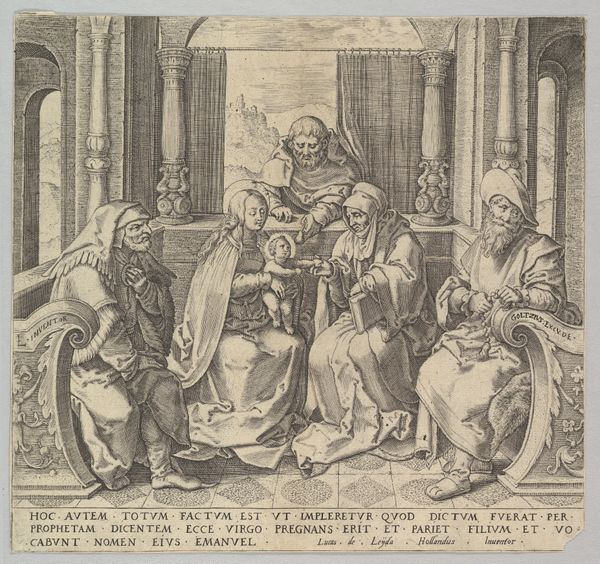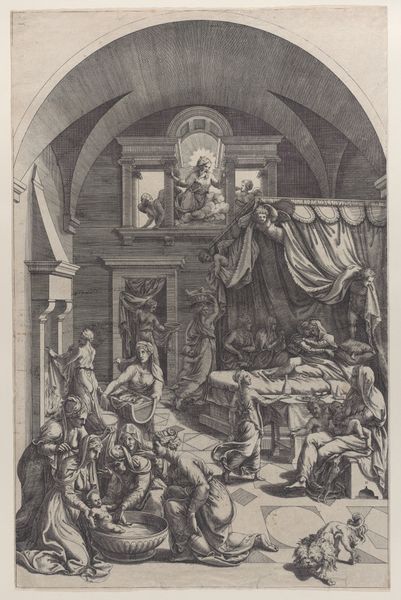
Copyright: National Gallery of Art: CC0 1.0
Augustin Hirschvogel created this engraving, Christ in the Tomb, in the mid-16th century. The image shows three guards surrounding the tomb, the stone of which is decorated with cracked, web-like marble patterns. The text below the image tells the story of Christ being placed in the tomb and guarded for three days. Hirschvogel was working in a tumultuous period in German history with the rise of the Reformation and religious conflict. The artist’s choice to depict the subject as an engraving would have allowed it to be widely distributed to a broad audience. Here, Hirschvogel presents a vision of the entombment of Christ to be disseminated amongst a population undergoing rapid social and religious change. To better understand the work, scholars consult theological texts, social histories, and printmaking histories. By understanding the social and institutional contexts, we can see how artists negotiate social change.
Comments
No comments
Be the first to comment and join the conversation on the ultimate creative platform.
